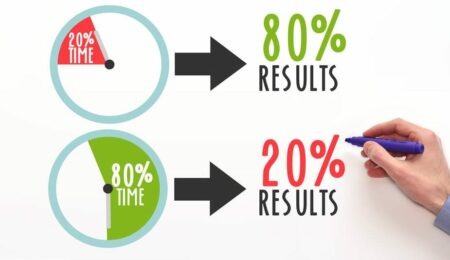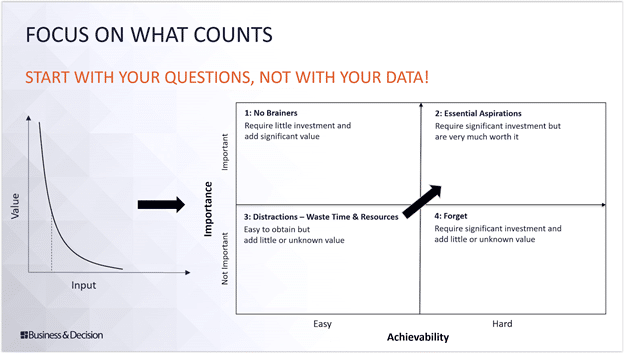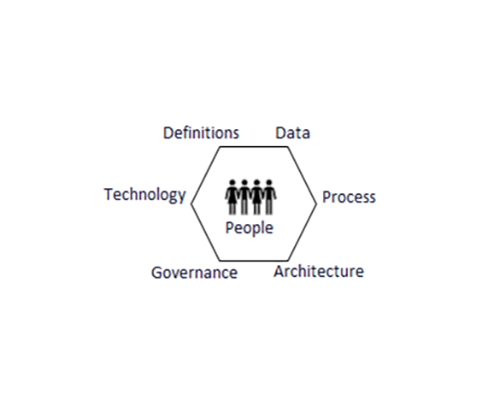1.No Alignment between Strategy and Analytics
Unfortunately, analytics initiatives are very seldomly aligned with business strategy. There are two main reasons for that.
First, analytics is often delegated to Finance and IT where it is further delegated to lower levels of management. If you want your analytics to be aligned with your strategy, do not delegate but ensure active leadership from the highest level of management.
Second, strategy is often confused with goals. Achieving market leadership, product/service excellence, international expansion, product diversification, etc. are valid goals but they are not strategy. Goals are what you want, strategy is how you achieve them. No wonder almost all analytics initiatives are limited to monitoring business goals which is insufficient in a highly competitive world.
Michael Porter, arguably the most credible thinker about strategy, says there are “only two generic strategies: differentiation and cost leadership”. In order to earn excess profits, you either differentiate yourself sufficiently from the competition to have pricing power or you lead the competition by being the low-cost provider if significant differentiation is not possible.
Imagine a generic bank. Most of its services are commodities and highly regulated. It is very hard to differentiate significantly so most customers decide based on price and convenience. To earn excess profits the bank must do three things:
– Be the low-cost provider
– Make it easy for customers
– Manage risks
Some of the highest cost drivers for banks are capital and personnel costs along with IT and compliance costs.
– In order to drive down capital cost, a bank must attract low-cost customer deposits. In addition, it must manage risk more effectively so that it can borrow capital at attractive terms.
– In order to drive down personnel, compliance and IT costs and make it easy for customers to use its services, simple products, economies of scale and automation are essential.
A bank that relentlessly focuses on simplifying its customers’ lives with essential services that are easy to understand, manage and use and one that provides friendly customer-service is in a great position to become and remain the low-cost provider because it can attract customers at a low cost, gain economies of scale, spread mostly fixed IT and compliance costs across more customers to reduce costs even further.
This low-cost advantage is also beneficial for managing risks. On the one hand, simpler products are less risky operationally. On the other hand, having a lower cost-structure provides a bank with more flexibility to walk away from mispriced risks and only accept risks when they are priced correctly.








